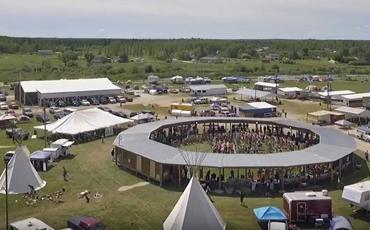First Nations are responsible for building and keeping up their offices, schools, houses, roads and other capital assets. This is an important part of healthy and safe community living.
Having a policy and procedures on capital assets and projects will support the First Nation in making sure that it has the money to do this when it is needed. It will also make sure that it is done to quality and cost expectations.
Under the FAL, Council must create a policy for managing the First Nation’s capital assets.
This policy must set out the rules and guidelines for life-cycle planning of these capital assets, including:
- creating and keeping all information on a capital asset up-to-date. This includes the location, owner, year the resource was received, dates of inspection, how long the asset is expected to be useful (from the time it was received), and (after inspection) the value and insurance coverage of the asset
- the yearly inspection of all capital assets. This includes what the asset is currently used for, if the asset needs repair, if the asset is the right one for the task it is being used for, the remaining lifespan of the asset and how much it will cost to replace, a guess on the future dates and cost to replace or repair the asset, how much it has cost to use and repair the asset over the last five years, records of repair, and insurance coverage
- the yearly plan for the regular maintenance and repair of capital assets
- the yearly budget for repair and replacement of capital assets, including new construction
- estimated repair and asset replacement costs, including new construction. These should include the short, medium, and long term cost estimates
This policy must state that Council must create and put money into a savings fund for the purpose of construction, maintenance, replacement, and purchase of the First Nation’s capital assets.
Council must also create a policy for planning and carrying out capital projects.
This policy includes the steps for:
- setting the maximum amounts that show when a capital project planning process should begin. These should be set by the amount of money available, sources to receive money from, projects, or the expected impact on the community
- when the maximum amounts are exceeded, Council must document a capital project plan (which may also be called a business plan or financing proposal)
- the capital project plan must include all information that is needed to reach an informed decision. This includes the ability to continue the plan’s goals over a period of time, the tasks needed for the project to operate smoothly, and a risk assessment
This policy must state that the plan for a capital project must include:
- the necessary project planning, design, engineering, safety, and environmental standards
- the cost, budget, financing, and approval of the project
- the standards for hiring or bidding for a contractor
- tender, contract form, and contract acceptance
- insurance for the varying steps of construction
- the guarantees of project performance
- project control, including contract management
- money withheld, approvals to work, and procedures for payments and audits
This policy must also state that the First Nation’s members must be part of or told about capital projects and any borrowing of money that is done for the construction of new capital asset projects.

